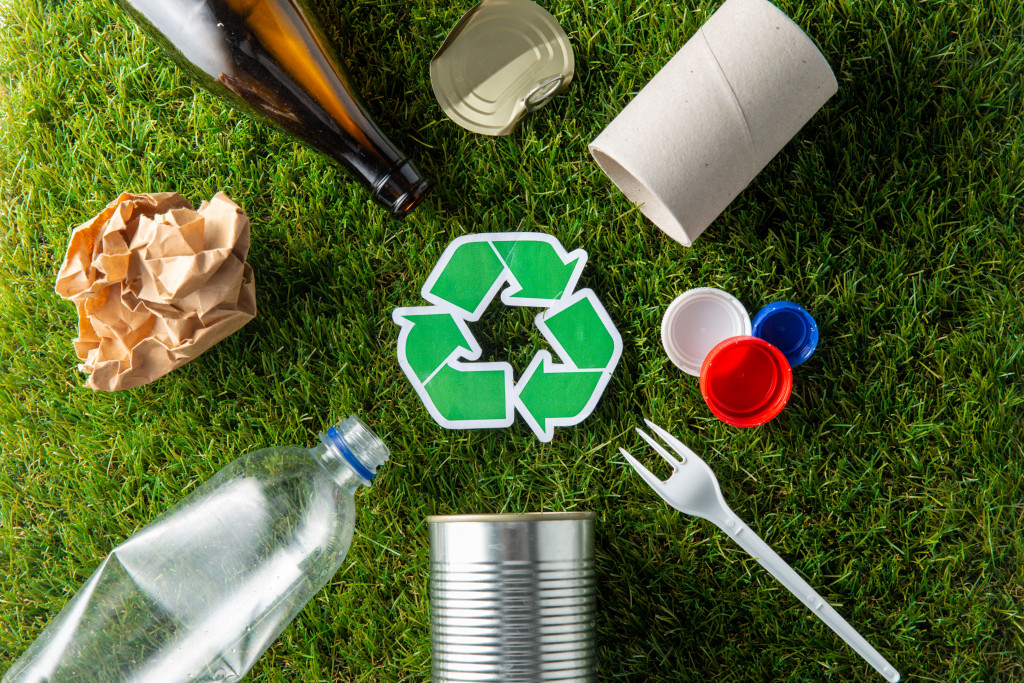- Sustainable renovations use eco-friendly materials and methods to decrease carbon footprint and lower energy costs.
- Selection of recycled or reclaimed materials and energy-efficient construction techniques reduces environmental impact.
- Leveraging crane services for sustainable installations and prioritizing eco-conscious landscaping promote green renovations.
- Energy-efficient upgrades, including energy-efficient appliances and renewable energy systems, enhance home sustainability.
- Effective waste management through minimizing construction waste, recycling, and composting strategies support a zero-waste approach.
As the world becomes more environmentally conscious, so does the world of home renovations. There has been a growing trend in using eco-friendly materials and methods in home improvement projects.
This approach decreases the carbon footprint and reduces energy costs in the long run. Choose sustainable building materials and upgrade to energy-efficient appliances to make your home renovation project sustainable.
Using reclaimed wood or salvaged hardware can add character and charm to any room. Likewise, reclaimed bricks, stone, pavers, and other masonry materials can create beautiful patios and walkways. This blog post will explore some eco-friendly options for your home renovation project.
Selecting Eco-Friendly Materials and Methods
Selecting the suitable materials and methods for your renovation project can significantly reduce the environmental impact. Here’s how you can make a positive change with two important components of any renovation project:
Choosing Sustainable Building Materials
To promote sustainability, selecting eco-friendly and sustainable building materials is crucial. Opt for recycled materials like glass for countertops to reduce landfill waste. Other options include reclaimed wood, recycled steel, and concrete.
Energy-Efficient Construction Methods
Green home renovations also require energy-efficient construction methods, such as using energy-efficient appliances, systems, and LED lighting. Proper insulation and sealing further reduce energy consumption and improve efficiency.
Utilizing Crane Services
Crane services can be crucial in green home renovations, particularly for larger projects. Reliable crane services assist in installing large structures, such as solar panels or wind turbines, that might be part of your sustainable home upgrade. Look for services using electric or hybrid cranes with a lower carbon footprint than traditional diesel ones.
Eco-Conscious Landscaping
Green home renovations go beyond the interior; they also encompass the backyard. Eco-friendly landscaping is crucial for an environmentally conscious renovation.
This includes using native plants that need fewer pesticides and fertilizers. Rain gardens and permeable pavers can reduce soil erosion and improve water management.

Energy-Efficient Home Upgrades
Energy-efficient home upgrades are an essential part of making your home environmentally friendly. Here’s how you can further enhance your home’s energy efficiency and contribute to a sustainable future:
Assessing Your Home’s Energy Efficiency
To make energy-efficient home upgrades, assess your home’s energy efficiency. Identify areas where energy is wasted through an energy audit or professional help. Once identified, make the necessary upgrades.
Upgrading to Energy-Efficient Appliances
Upgrading to energy-efficient appliances can help to reduce energy consumption and promote sustainability. This includes replacing old appliances with new ones with a high energy star rating. Examples of energy-efficient appliances include refrigerators, dishwashers, and washing machines.
Harnessing Renewable Energy
Using renewable energy is crucial for green home renovations. This includes solar panels, wind turbines, or geothermal systems to produce clean energy. It reduces consumption and promotes sustainability.
Waste Reduction and Recycling
Reducing waste and recycling materials are vital in greener home renovation. Here’s how to effectively manage waste and implement recycling methods in your green home renovation venture:
Minimizing Construction Waste
Minimizing construction waste involves using materials that can be reused and recycled. Additionally, working with a contractor committed to reducing waste is essential. For example, some contractors use a waste management plan that involves sorting materials on-site and diverting them to be reused or recycled.
Recycling and Composting Strategies
Setting up a recycling and composting strategy is another essential part of green home renovations. This involves setting up bins for paper, plastic, and glass. Additionally, setting up a composting bin can help to reduce food waste and promote sustainability.
“Zero-Waste” Approach
A “Zero-Waste” approach requires diverting all waste from landfills through recycling, composting, and partnering with waste-reducing contractors. Additionally, using reusable products instead of disposables promotes sustainability by reducing waste.

In conclusion, green home renovations have become a popular trend in home improvement. From selecting eco-friendly materials and methods to upgrading to energy-efficient appliances, there are many ways to make your home renovation project sustainable.
Moreover, proper insulation and sealing, harnessing renewable energy, and implementing recycling and composting strategies can help to reduce energy consumption, promote sustainability, and reduce waste. With a little effort and planning, you can make your home renovation project environmentally friendly and help preserve the planet for future generations.

